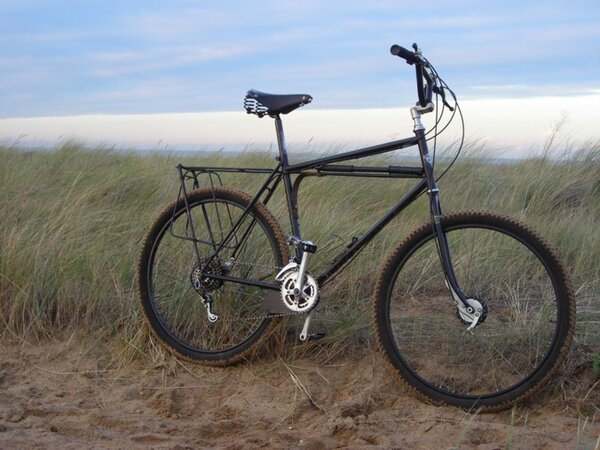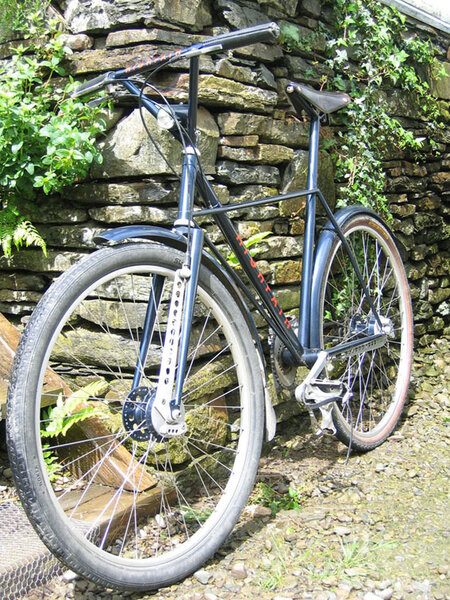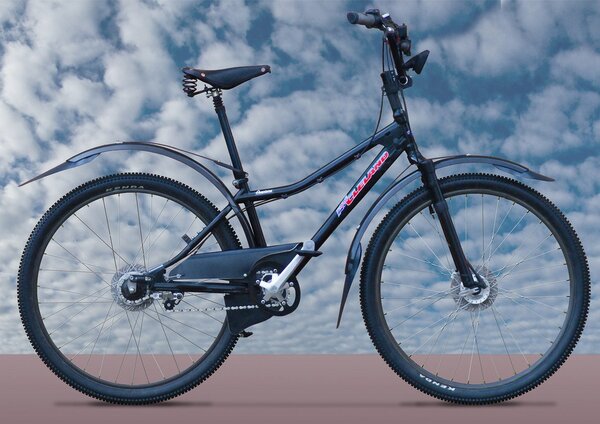- Feedback
- View
Thanks for that Stylus.
My initial reaction on seeing the bike was just how big it is. It makes any 26" wheeled bike look small and puny. However it's the wheels that are big and not the frame, it is very easy to get on and off and you don't need to be tall to ride it.
With most mountain bikes you climb on top in order to ride them. With this bike you sit behind the handlebars and you feel as if the bike surrounds your body as you ride. This feels very secure and because their is less weight on the front wheel the bike is easier to control, feels very safe and the chance of going over the handlebars is much reduced.
The Dutch bike appearance is to some extent superficial. In reality the frame angles are more upright than a Dutch bike, the wheelbase shorter and top tube is lower than a diamond framed Dutch equivalent.
One styling option would be to use a triple triangle frame like that of the Highpath' SpeedLight or "Big Blue" bikes. This would be more retro whilst achieving the low step over height required. It is also a very elegant and lightweight solution from a structural point of view.
What do people think?
My initial reaction on seeing the bike was just how big it is. It makes any 26" wheeled bike look small and puny. However it's the wheels that are big and not the frame, it is very easy to get on and off and you don't need to be tall to ride it.
With most mountain bikes you climb on top in order to ride them. With this bike you sit behind the handlebars and you feel as if the bike surrounds your body as you ride. This feels very secure and because their is less weight on the front wheel the bike is easier to control, feels very safe and the chance of going over the handlebars is much reduced.
The Dutch bike appearance is to some extent superficial. In reality the frame angles are more upright than a Dutch bike, the wheelbase shorter and top tube is lower than a diamond framed Dutch equivalent.
One styling option would be to use a triple triangle frame like that of the Highpath' SpeedLight or "Big Blue" bikes. This would be more retro whilst achieving the low step over height required. It is also a very elegant and lightweight solution from a structural point of view.
What do people think?


